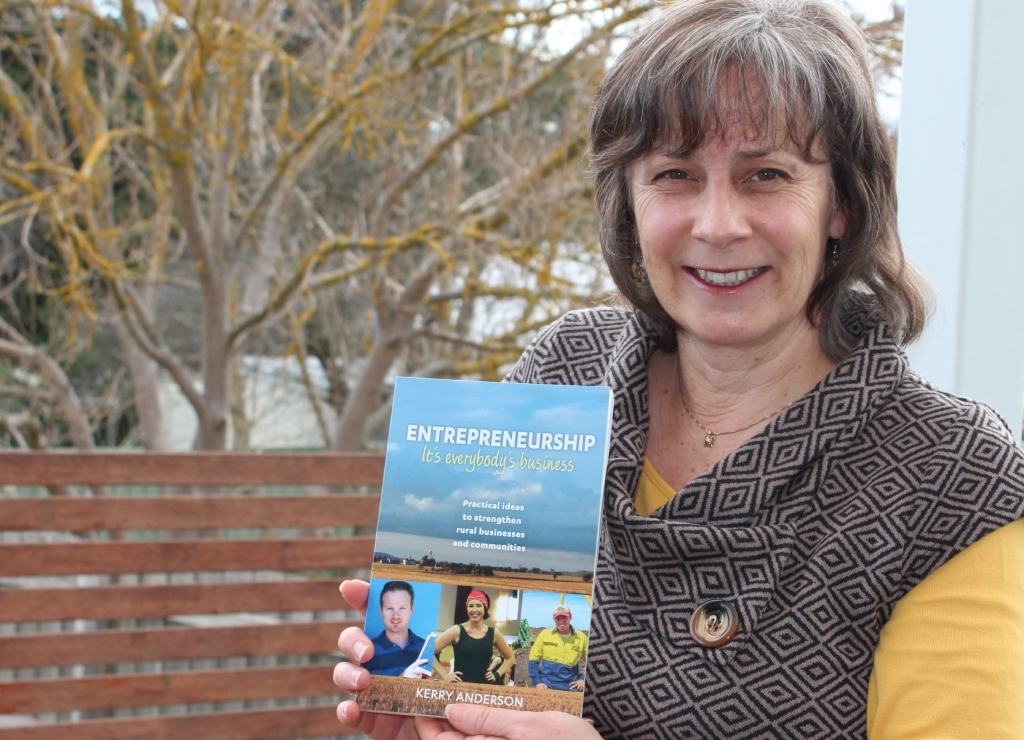An artful business
Sobrane in her Broome WA studio
Rural Australia is increasingly becoming home to artists that are bringing a vibrancy to rural towns. They are bravely forging a lifestyle that encompasses their passion, but how do they successfully make a living Kerry Anderson ponders?
All too often we hear that artists are struggling and having to supplement their incomes elsewhere. Regardless of what genre, how can they make a reasonable living from what is often perceived as a hobby? Most creative minded people are not renowned for their business acumen and yet there are many examples of successful artists operating at a high level. If artists want to be seriously considered and earn a reasonable income, they do need to apply some business rigour. There are some difficult questions that should be asked and conscious decisions made if they want to financially survive and thrive. How do they value an item? How do they value their time? How do they value their brand?
Apart from the serious collectors who go by a whole different set of criteria; when it comes to valuing an item that old saying ‘beauty is in the eye of the beholder’ rings true. To whomever this piece speaks, it is considered the most valuable. I have never bought a piece of art without considering two things first. Do I like it? And secondly, do I have a suitable space for it to be displayed? If the answer to those two questions is yes, then I finally ask myself: Can I afford it?
So, you first have to consider who your art will appeal to and know their price range. Central Victorian sculptor Trevor Prest’s work mostly comprises of large heavy pieces most suited to big spaces. It goes without saying that an art gallery, or a company or university wanting to make an impact in their entry foyer, will pay considerably more than the average home collector. Having said that, I loved his work so much that I did buy a piece and managed to squeeze it in to my house.
But how on earth can an artist value their time when they are doing something that they love? Like farmers who choose a lifestyle, this may be just too hard a question to answer. Perhaps a better question is to ask: What total income do you need to live comfortably? Then, it is a simple matter of working backwards and thinking about cash flow, what types of items bring in the best results, and how many you have to sell at what price to meet your target income. Your best-selling and most profitable items must come first. Afterwards you can indulge in your passion. As a starting base you should think about how much it costs to produce (materials etc), not forgetting all those small hidden costs like studio rental or services, advertising, packaging, and transport that quickly add up.
And, when it comes to your personal time in marketing your work, make sure you are spending it where it counts. An artist at a Farmer’s Market recently mentioned to me that he was about to stop attending the markets as his items were becoming too highly priced for this type of audience. Good decision as he will not only save on his personal time but also the cost of travel. Lucky, I made my purchase beforehand.
Before you start thinking that I buy everything I see, I recently visited Sobrane’s studio in Broome, Western Australia, and left with only a greeting card; mainly because my suitcase wasn’t big enough. It was interesting to see how she has positioned herself as an artist and diversified her products to create a steady flow of income. In addition to the big priced pieces of artwork for serious collectors, there were lots of smaller items that browsing tourists could happily purchase; for instance, cushion covers, cards and smaller unframed art works. Sobrane has also embraced the latest trend where street artists are employed through community grants to paint silos and other large buildings in rural communities creating tourist attractions.
Branding is king no matter what industry you work in. If you portray yourself as a struggling artist selling whatever you can, then buyers will expect low prices. Valuing yourself and knowing the worth of your artwork is just so crucial in sending out the right message. It all comes down to perception and how it is presented, from the sales venue right down to the artistic quality of the price tag. In the digital era with capacity for online marketing and sales, there is a much wider reach and audience for artists who can create a strong brand.
No business person has every skill required to be successful. The key is to ask the hard questions, recognise your strengths and weaknesses, seek professional advice when required, and surround yourself with a team when taking your business to the next level.
A final word of advice from someone who unfortunately doesn’t have a creative bone in her body. It also helps if you’re good at what you do!
KERRY ANDERSON: Author of ‘Entrepreneurship: It’s Everybody’s Business,’ Kerry works with small businesses and rural communities to help them embrace new opportunities. READ MORE

